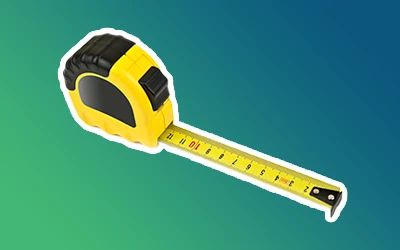If you run a business from your home, you may be eligible for a valuable tax break known as the home office tax deduction. This deduction allows you to reduce your taxable income by claiming a portion of your home expenses used for business purposes.
Whether it’s an entire room, a corner of your living room, or even a small section of your kitchen, as long as the space is exclusively used for business activities, it may qualify. However, this deduction is only available to some and comes with specific rules and calculation methods.
Let’s explore who qualifies, how to claim the deduction, and the different methods for calculating it, so you can maximize your tax savings while working from home.
What is a Home Office Tax Deduction?
A home office tax deduction allows you to write off a portion of your home expenses on your taxes if you use part of your home for business purposes. This deduction helps reduce your taxable income by recognizing the business use of your home. The “home office” space can be a dedicated room, part of a room, or even a small area like a section of your kitchen, as long as it is exclusively used for business activities.
It’s important to note that this deduction is available only to business owners. Under the Trump Tax Reform, W-2 employees were excluded from claiming this deduction. While this change may reverse after 2025, for now, only business owners can take advantage of the home office deduction. Remember, the key factor here is that the space must be exclusively used for business purposes to qualify.
Who can Claim this Deduction?
This deduction is available to sole proprietors, single-member LLC owners, members of multi-member LLCs, and partners in partnerships. These individuals can generally claim the deduction with relative ease. However, for corporation owners — whether it’s a C Corporation or an S Corporation — the process is different. Owners of corporations are considered employees, and therefore, the corporation should reimburse them for any home office-related expenses rather than deducting them directly.
If you are a sole proprietor or single-member LLC owner, you can calculate the deduction by filling out IRS Form 8829 and then claiming it on your Schedule C. For owners of multi-member LLCs or partnerships, the home office deduction is treated as an unreimbursed partner expense, which follows a different process.
How is the Home Office Deduction Calculated?
There are two primary methods for calculating the home office deduction:
- Simplified Method: This method allows you to deduct $5 per square foot of your home office space, up to a maximum of 300 square feet. For example, if your home office is 100 square feet, you would multiply that by $5, resulting in a $500 deduction. This method is straightforward, but it often results in a smaller deduction than the actual expense method.
- Actual Expense Method: This method requires more detailed calculations. First, measure the square footage of your office and compare it to the finished square footage of your entire home (information that can often be found on real estate websites like Zillow). Next, calculate the percentage of your home that is used for business by dividing the office square footage by your home’s total square footage. For example, if your office is 100 square feet in a 1,000-square-foot home, your business-use percentage would be 10%.
After calculating the percentage, gather all relevant home expenses, such as rent, utilities, internet, and other costs. If you’re renting, you can deduct a percentage of these expenses based on your home office calculation. For instance, if your rent is $2,300 per month and your business-use percentage is 10%, you can deduct $230 per month.
For homeowners, the calculation is slightly different because only the mortgage interest (not the principal) is deductible. You would calculate your deduction by considering mortgage interest, property taxes, utilities, internet, and depreciation. After adding up your total expenses, multiply them by the percentage of your home used for business to determine your deduction. All of these calculations are reported on IRS Form 8829, “Business Use of Your Home.”
Home Office Calculation for a Home Addition
If you build an addition to your home or finish a basement, your total finished square footage will increase. You must consider this when calculating your home office deduction because the increase in finished square footage will impact your percentage calculation, potentially lowering your deduction. However, if you’ve added new space that is exclusively used for business, both the numerator (business space) and the denominator (total finished space) will increase, which may maintain or even boost your deduction.
Claiming Unfinished Space in your Office Deduction
If you use unfinished space, such as a garage, for business purposes — whether for storage or operating a business — you can include that space in your home office deduction. However, be sure to include the entire square footage of the garage (or any other outbuildings you use) in your denominator, as it contributes to the overall calculation.
We are here to assist you in determining your home office deduction and preparing your taxes. Reach out to us at nguyencpas.com or support@nguyencpas.com to schedule a complimentary consultation with one of our advisors.



